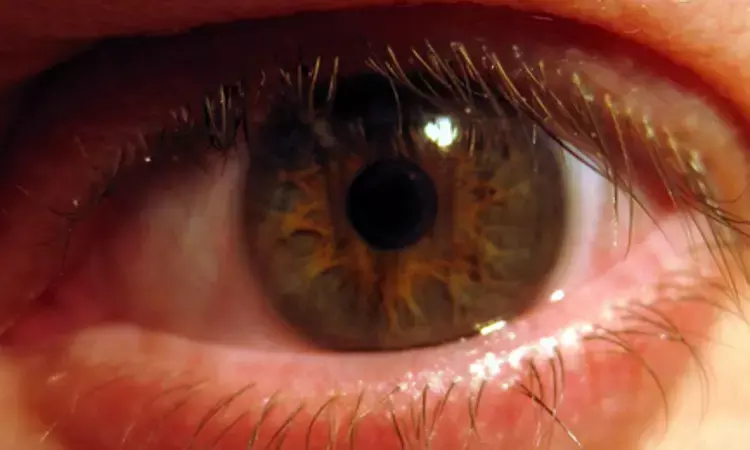- Home
- Medical news & Guidelines
- Anesthesiology
- Cardiology and CTVS
- Critical Care
- Dentistry
- Dermatology
- Diabetes and Endocrinology
- ENT
- Gastroenterology
- Medicine
- Nephrology
- Neurology
- Obstretics-Gynaecology
- Oncology
- Ophthalmology
- Orthopaedics
- Pediatrics-Neonatology
- Psychiatry
- Pulmonology
- Radiology
- Surgery
- Urology
- Laboratory Medicine
- Diet
- Nursing
- Paramedical
- Physiotherapy
- Health news
- Fact Check
- Bone Health Fact Check
- Brain Health Fact Check
- Cancer Related Fact Check
- Child Care Fact Check
- Dental and oral health fact check
- Diabetes and metabolic health fact check
- Diet and Nutrition Fact Check
- Eye and ENT Care Fact Check
- Fitness fact check
- Gut health fact check
- Heart health fact check
- Kidney health fact check
- Medical education fact check
- Men's health fact check
- Respiratory fact check
- Skin and hair care fact check
- Vaccine and Immunization fact check
- Women's health fact check
- AYUSH
- State News
- Andaman and Nicobar Islands
- Andhra Pradesh
- Arunachal Pradesh
- Assam
- Bihar
- Chandigarh
- Chattisgarh
- Dadra and Nagar Haveli
- Daman and Diu
- Delhi
- Goa
- Gujarat
- Haryana
- Himachal Pradesh
- Jammu & Kashmir
- Jharkhand
- Karnataka
- Kerala
- Ladakh
- Lakshadweep
- Madhya Pradesh
- Maharashtra
- Manipur
- Meghalaya
- Mizoram
- Nagaland
- Odisha
- Puducherry
- Punjab
- Rajasthan
- Sikkim
- Tamil Nadu
- Telangana
- Tripura
- Uttar Pradesh
- Uttrakhand
- West Bengal
- Medical Education
- Industry
Calcium hydroxyapatite injection may correct orbital volume deficit with post enucleation socket syndrome: Study

Injectable calcium hydroxyapatite (CAHY) has emerged as a promising option for correcting orbital volume deficit in post enucleation socket syndrome. However, data on its long-term efficacy and safety are limited. A recent observational study aimed to evaluate the 10-year outcomes of injectable CAHY for orbital volume augmentation.
Postenucleation socket syndrome often leads to enophthalmos, causing functional and cosmetic concerns for patients. Injectable CAHY offers a minimally invasive approach to address this issue, but its durability and persistence over time have not been extensively studied. This study was published in the journal Ophthalmic Plastic and Reconstructive Surgery by Di Maria and colleagues.
The study conducted a clinical review of 31 patients with post enucleation socket syndrome who underwent injectable CAHY placement for orbital volume augmentation. Patients were followed up for 10 years, and the amount of CAHY injected was tailored to the degree of orbital volume deficit. Patients with previous radiotherapy or inadequate conjunctival fornix were excluded.
The key findings of the study were:
• Patients demonstrated a mean increase in orbital volume of 3.35 ± 0.91 at 6 months and 2.97 ± 1.35 at 10 years post-injection.
• The mean follow-up duration was 219 ± 18 months, with clinical and cosmetic improvement observed to persist for 10 years.
• Complications were minimal, including peribulbar ecchymosis, two cases of extrusions of the internal prosthesis, and two cases of ptosis.
• The study highlights the long-term efficacy and safety of injectable CAHY for correcting orbital volume deficit in post enucleation socket syndrome.
• The sustained improvement observed over 10 years, along with minimal complications, underscores the reliability of this technique.
Injectable CAHY emerges as a safe, simple, and cost-effective option for treating orbital volume deficiency in post enucleation socket syndrome. Its semi permanent nature and negligible volume loss over 10 years make it a promising solution for patients seeking lasting cosmetic improvement. Further research and larger studies are warranted to validate these findings and optimise treatment protocols.
Reference:
Di Maria, A., Ferraro, V., Trenti, N., Morenghi, E., Gaeta, A., Vinciguerra, P., & Confalonieri, F. Ten-year follow-up of orbital volume augmentation with calcium hydroxyapatite filler in postenucleation socket syndrome. Ophthalmic Plastic and Reconstructive Surgery,2024;40(1):49–54. https://doi.org/10.1097/iop.0000000000002500
Dr Riya Dave has completed dentistry from Gujarat University in 2022. She is a dentist and accomplished medical and scientific writer known for her commitment to bridging the gap between clinical expertise and accessible healthcare information. She has been actively involved in writing blogs related to health and wellness.
Dr Kamal Kant Kohli-MBBS, DTCD- a chest specialist with more than 30 years of practice and a flair for writing clinical articles, Dr Kamal Kant Kohli joined Medical Dialogues as a Chief Editor of Medical News. Besides writing articles, as an editor, he proofreads and verifies all the medical content published on Medical Dialogues including those coming from journals, studies,medical conferences,guidelines etc. Email: drkohli@medicaldialogues.in. Contact no. 011-43720751


